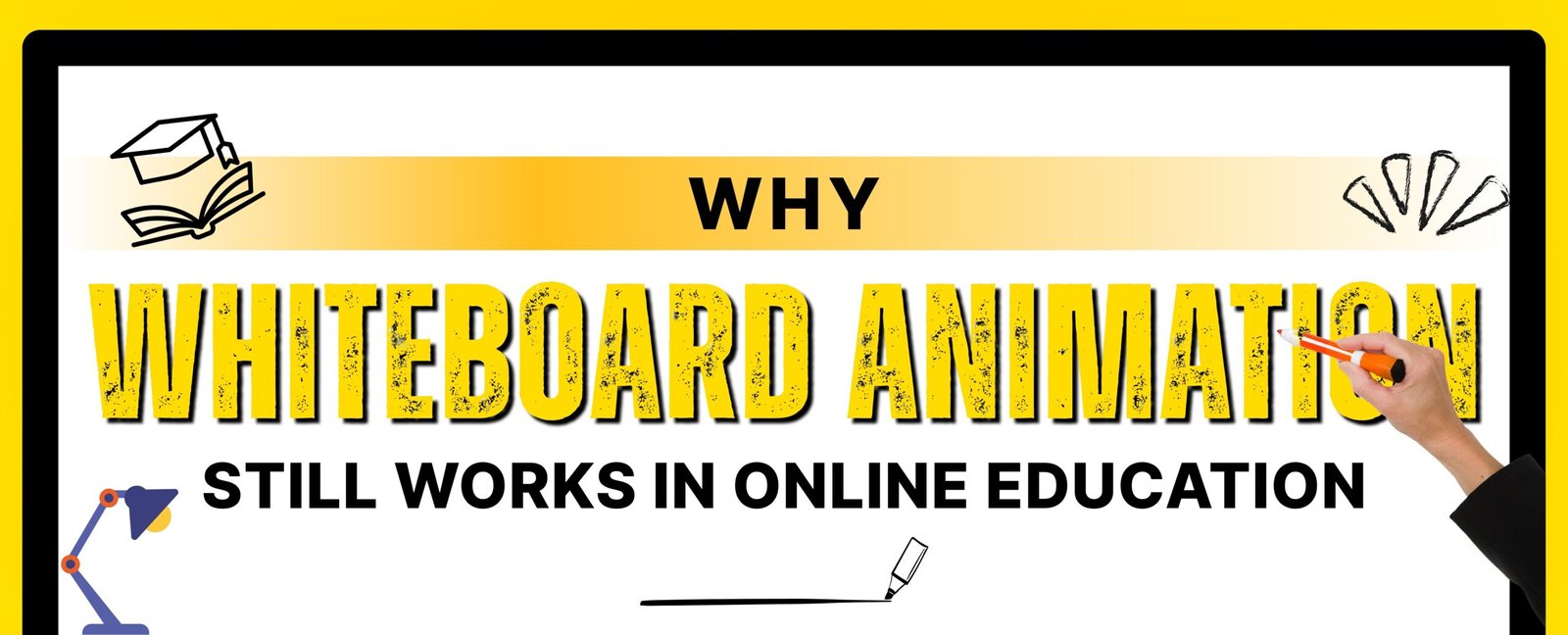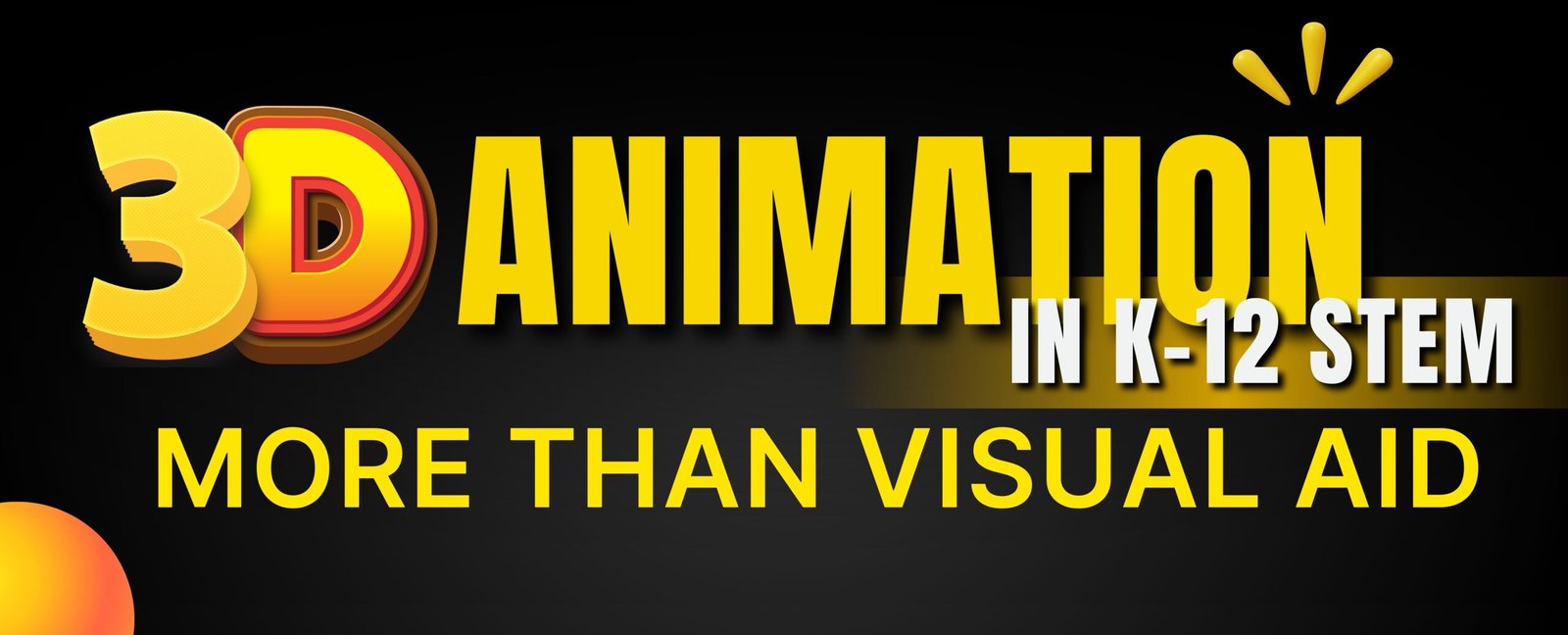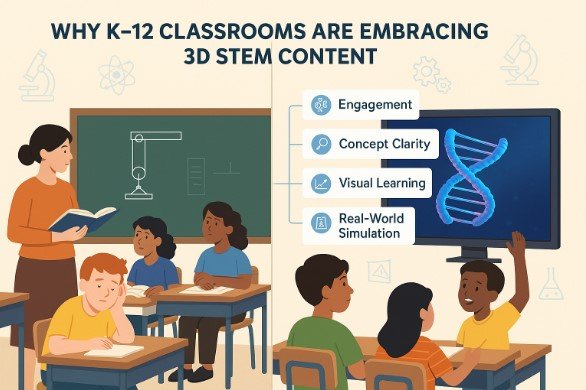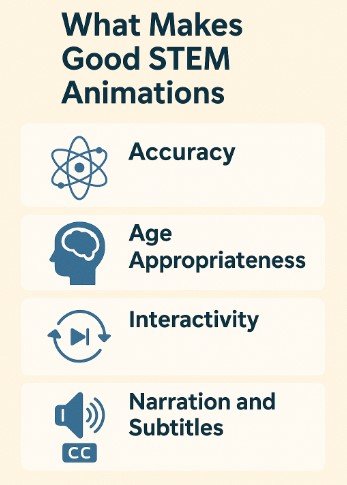Introduction
When it comes to creating engaging content in online education, few formats hold up as consistently well as whiteboard animation. While new digital methods are introduced regularly, whiteboard animation has quietly remained a reliable choice, one that both educators and learners continue to appreciate for its clarity, simplicity, and impact.
Whether used by an eLearning company in India, global universities, or individual content creators, e-Learning animated videos in the whiteboard style prove time and again that they are more than just a passing trend. They offer a practical, engaging, and affordable way to teach concepts that range from the very basic to the highly complex.
The Roots of Whiteboard Animation in Education
Whiteboard animation began gaining traction in educational circles over a decade ago, especially through the RSA Animates series. Running from 2010 to 2016, this series brought academic theories and social insights to life using whiteboard-style visuals.
Topics included education, motivation, and economics, explained by voices like Sir Ken Robinson and Dan Pink. These videos were illustrated and animated in a style that mimicked classroom teaching, hand-drawn sketches on a whiteboard surface, matched with an informative voiceover.
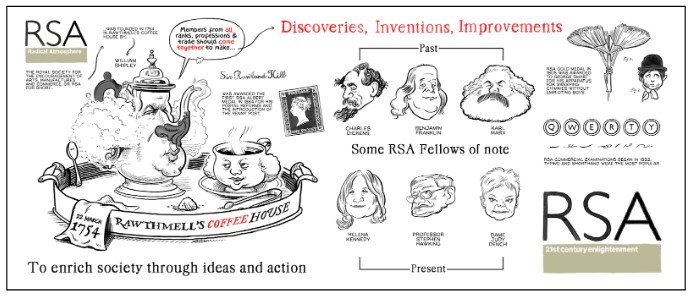
The impact was significant. One video alone, “Changing Education Paradigms”, left university students speechless in lectures. Another, on economics, was shared enthusiastically by professors with their students. Over 100 million views later, it’s clear that this format doesn’t just present information- it resonates.
The roots of this animation style go even deeper, inspired by real classroom settings where teachers drew diagrams and ideas on actual whiteboards. Early whiteboard animations were literally filmed over someone’s shoulder as they sketched. Today, the process is digital, but the essence remains: clear, concise visuals guided by a thoughtful narrative.
Why It Still Works: Simplicity Meets Impact
There’s a reason whiteboard animation has held its ground despite the rise of 3D visuals and other high-end media. Its strength lies in its ability to communicate without distraction.
E-Learning animated videos created using whiteboard techniques rely on visual storytelling. They don’t flood the screen with effects or unnecessary details. Instead, each animation is carefully designed to illustrate the main idea in a structured sequence. The human brain naturally follows this order, making it easier for learners to absorb and retain information.
This approach is effective across different subjects- science, history, ethics, and even corporate training modules. That’s why many choose to make animated videos using this method when aiming to break down difficult or dry topics into more digestible content.
A Multi-Modal Learning Experience
Whiteboard animations combine visual, auditory, and often textual elements. This multimodal strategy supports varied learning styles, making it easier for more students to engage. Some grasp content faster through visuals, others through spoken explanations. By combining both, these animations allow more inclusive access to knowledge.
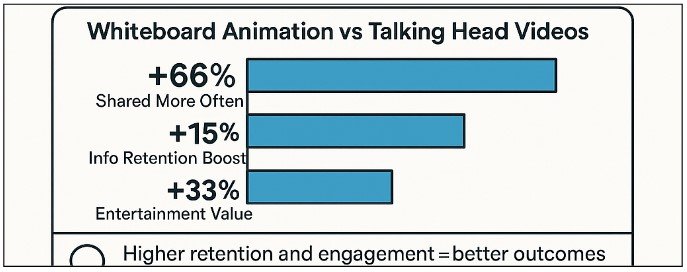
Research supports this. Professor Richard Wiseman compared whiteboard animation to standard “talking head” videos. He found that whiteboard animations were:
- 66% more likely to be shared
- 15% more effective in aiding information retention
- 33% more entertaining
These figures aren’t trivial. For educators and eLearning professionals, higher retention and engagement can dramatically improve learning outcomes.
Accessibility Features Add More Value
Whiteboard animation isn’t only effective- it’s inclusive. Visual and audio formats can be designed to support learners with different needs. This includes:
- High-contrast color schemes for visual impairments
- Subtitles and closed captions for the hearing impaired
- Audio descriptions for learners with visual impairments
With the right scripting and planning, whiteboard videos also lend themselves well to being translated or localized for broader audiences, making them ideal for institutions with diverse learners.
Simplifying the Complex, Enriching the Ordinary
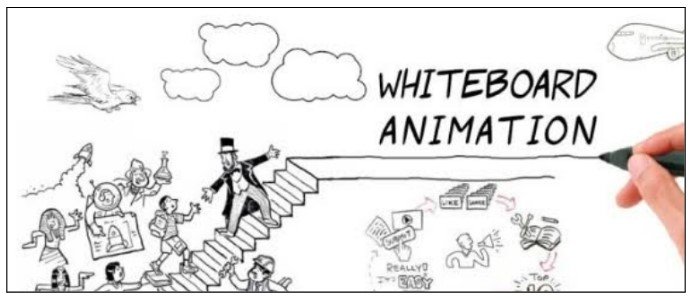
One of the most appreciated features of whiteboard animation is its ability to simplify complex topics. In science education, it has been used to explain theories from quantum physics to environmental sustainability. You can consider Professor Stephen Hawking’s black hole theory- visual metaphors and illustrative storytelling turned abstract physics into understandable content.
It also makes dry subjects, like regulatory updates or corporate policy changes, feel more relatable and memorable. When done well, even the most mundane information becomes an engaging story.
That’s where the real magic happens, whiteboard animations don’t just deliver information. They bring it to life.
Tailored Content for Specific Audiences
Another reason this format remains relevant is its adaptability. Every aspect, illustrations, tone of voice, script, timing, can be customized. Whether you’re addressing young school children or professionals in a training session, you can tailor the animation to suit the mood, culture, and level of understanding.
For instance, an eLearning company in India can design e-Learning animated videos for regional audiences by using local examples, cultural references, and multilingual voiceovers, all while maintaining the universal simplicity of whiteboard visuals.
Encouraging Repetition and Reusability
Whiteboard animations are often rewatched, by choice. Learners return to them when revising for exams or clarifying concepts, treating them almost like digital teaching assistants. Unlike live lectures or training sessions, these animations are available anytime, anywhere, and can be revisited without additional cost or effort.
This is particularly useful in large-scale educational settings, such as universities. The Chinese University of Hong Kong tested whiteboard animation in a course taken by 3,600 students annually. Key findings included insights that reflect broader animation-driven learning trends shaping e-learning globally.
- 92.1% of students found the videos helpful for gaining knowledge
- 92.7% said they improved understanding
- 87.4% felt increased interest in the topics
- 86.2% preferred whiteboard animations over traditional lecture videos
These figures highlight that students not only learn better, they also enjoy the process more.
Budget-Friendly Without Spending Much
One of the standout advantages of whiteboard animation is cost-efficiency. Compared to live-action videos or full 3D productions, whiteboard videos require fewer resources. There’s no need to rent studios, hire actors, or shoot multiple takes. Many studios have custom asset libraries, speeding up the production while maintaining quality.
When institutions need to produce multiple training modules or learning units, whiteboard animations offer substantial savings. A single studio can deliver minutes or even hours of content quickly, making it a smart choice for ongoing projects.
Companies like Cputek, which started in 2019, have demonstrated how whiteboard animation supports long-term learning goals efficiently. From political science to IT training, they’ve handled diverse topics while maintaining viewer engagement and content clarity, even as educators explore best animation styles for different types of online courses.
Real Examples and Global Reach
Organizations around the world, from the RSA to TED-Ed to Infoskill, have used whiteboard animation to explain their messages clearly. Whether it’s highlighting the benefits of science education, exploring oceanic carbon capture, or simplifying IT services, this method continues to prove its worth.
These animations are also easier to adapt for global learners. Since visuals are often universally understood, only the narration or subtitles need to be changed for international use. This ensures consistent messaging without recreating entire videos from scratch.
FAQs
1. What are the benefits of using E-Learning animated videos in education?
E-Learning animated videos help explain difficult ideas through visual storytelling, making learning more interactive and easier to follow.
2. How does an eLearning company in India use whiteboard animation for training?
An eLearning company in India uses whiteboard animation to design custom training materials that suit different audiences and subjects, from corporate learning to school curriculum.
3. Why choose video and animation over traditional teaching methods?
Video and animation combine visuals, audio, and narration to keep learners focused and make key points easier to remember during lessons.
4. Is it easy to make animated videos for online learning?
Yes, with the right tools or expert support, educators and trainers can make animated videos that are clear, budget-friendly, and fit for various topics.
Conclusion
Whiteboard animation remains a solid, effective, and versatile format for online education. It supports diverse learners, simplifies complex ideas, and holds attention better than many alternatives. Whether you aim to explain core science concepts, regulatory policies, or soft skills, whiteboard animation provides a reliable structure to build meaningful content.
If you’re looking to make animated videos that resonate and educate without exhausting your budget or your audience, this format is worth serious consideration.
Whether you’re an educator designing a new course or an eLearning company in India catering to a multilingual audience, whiteboard animation offers the clarity, creativity, and consistency required to deliver your message successfully.
In the growing field of video and animation, whiteboard animation stands not just as a nostalgic nod to the classroom, but as a powerful tool that continues to serve both learners and educators alike.

By day I create engaging content along with infusing high-volume, low-competition keywords strategically so that it gets loved by you and Google Crawler. Off the clock? I scroll for fresh ideas. (Don’t judge, gotta fuel the creativity!)

